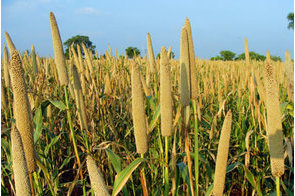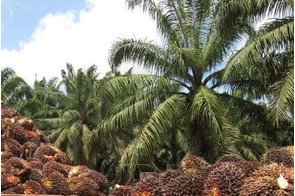Climate smart agriculture strategies for food security

Summary
Climate extremes might drive more people into severe hunger and poverty as more frequent intense weather events adversely affect food production.
The extremely hot dry season that lasted till March this year in Nigeria, and the unusual heat accompanying the rainy season that began shortly after, are the easiest explanation of a changing climate. The impacts of climate change are becoming more pronounced as temperatures increase in different parts of the world. Global temperatures have been on the rise. The last 10 years (2014-2023) were the warmest in the 144 years since global temperature records began in 1880. These overwhelming changes have dire consequences for the already existing food crises in different parts of the world, especially in developing nations.
Analyses by the US National Aeronautics and Space Administration and the National Oceanic and Atmospheric Administration show that global surface temperatures for last year were the highest since modern record keeping started. The chances that this year will be hotter than the record-shattering 2023 average temperature, which was 1.48°C warmer than in the pre-industrial era, is high. The warming threshold that nations agreed not to exceed at the United Nations Climate Change Conference (COP21) in 2015 was 1.5°C rise above the pre-industrial level, while an increase of 2.0°C must not be reached. Exceeding the set threshold would unleash more severe droughts, extreme heat, storms, and flooding than humanity can safely manage.
The first three months of 2024 have been reported by climate scientists to be even hotter than 2023. So far, April 2024 was the warmest April on record with a global surface temperature of 1.32°C above the 20th century average of 13.7°C, and 0.18°C warmer than the most recent April record set in 2020. There is a 55 percent chance that 2024 will overtake 2023 to become the hottest year on record and a 99 percent chance that it will rank in the top five hottest years eventually.
These climate extremes might drive more people into severe hunger and poverty as more frequent intense weather events adversely affect food production. The agriculture sector, most especially in the developing world, therefore, needs to swiftly adopt and strengthen the uptake of climate-smart approaches to rescue our food system in the face of climate change.
Based on my experience growing medicinal plants in a rural Nigerian community and those of other farmers around me who grow food crops and livestock, I have seen the urgent need for farmers to optimise modern farming practices and access technologies to achieve resilience to climate-induced hazards. In Nigeria and other countries across sub-Saharan Africa, farmers suffer huge losses as a result of flooding events, prolonged drought, and other disruptions of farming activities. Farmers in poor regions are more devastated by the impact of climate change.
In light of this, I would like to share some climate-smart strategies that could be employed to lessen the impact of weather extremes on crop and livestock production. One very important strategy is the cultivation of climate-resilient crop varieties. Selectively breeding crop varieties that can withstand harsh weather conditions, depending on the local environment, will improve crop yield and reduce susceptibility to climate hazards. For example, recently developed flood-resistant rice varieties that can withstand submergence for weeks should be made readily available to farmers in flood-prone areas to mitigate the impact of flood on rice production in different parts of Nigeria. Planting crop varieties that are more resistant to extreme temperatures can also help farmers mitigate the impact of global warming on crop yield.
About 21 new high-yield crop varieties, which must have passed through series of screening and certified safe for consumption, were released in April 2023 by the National Centre for Genetic Resources and Biotechnology. These include one lowland rice, three millet varieties, three yam varieties, five maize hybrids, three sorghum varieties, five tomato varieties – that possess modifications to withstand drought, pests, diseases, and other desirable characteristics – to boost food production. However, majority of these new varieties that can help to combat the impact of climate change are not accessible to rural farmers. Government agencies and other stakeholders must intensify efforts at providing improved seed varieties for farmers in remote locations.
In addition, climate-smart crop production requires efficient management of nutrients. The use of organic fertilisers and precision fertilising, in which farmers consider soil type, weather conditions, crop needs, other factors to determine what fertiliser to use and the appropriate quantities, and crop rotation can improve soil nutrients and fertility while limiting nutrient runoffs and release of greenhouse gases (GHGs) from synthetic fertilisers.
Agriculture is responsible for approximately 20 percent of GHG emissions, with livestock emissions from manure and gastroenteric releases accounting for up to 32 percent of human-caused, high-temperature-absorbing methane emissions, according to the United Nations Environment Programme. This makes climate-smart livestock management strategies imperative. Cattle, sheep, and goats have microbes in their stomach (rumen), called methanogens, which produce methane from the fermentation of feeds and which they later belch out. Apart from contributing to climate change as a GHG, the belched methane is a major inefficiency in animal production, leading to the loss of 2-12 percent of the gross energy that could have been converted for milk, meat, or fibre production.
Livestock feeds that are less digestible tend to produce more methane than higher quality feeds. This means that allowing livestock to feed freely, without monitoring what they feed on, contributes to higher release of methane. Therefore, efficient grazing through rotational approach is a very productive activity for climate-smart management of livestock where animals are moved periodically between multiple pastures and then allowed to rest for a given period. Unlike continuous grazing, rotational grazing is sustainable. The livestock in this case are well monitored to determine what type of plants they feed on, how much they eat, and how often they do so. Rotational grazing, therefore, provides better outcome for both livestock and pasture.
Specialised feed formulations, which entails incorporating special feed ingredients as dietary supplements, have been developed in different parts of the world. They have the ability to inhibit methanogens from producing methane. The formulations include ozone enzyme inhibitor – 3-Nitrooxypropanol – as well as plant-based alternatives like red seaweed, a blend of garlic and citrus, and green tea. Methane reduction, using supplementation of feed with these additives, can be from 11 percent to as much as 99 percent. Such dietary supplements used for limiting the release of methane can also be developed locally. When these methods are combined by ranchers, they can help to generate lower methane emissions while increasing the productivity of their livestock.
However, some major challenges hinder the uptake of climate-smart agricultural strategies despite their many benefits. For example, lack of awareness and knowledge about the agricultural techniques could deter willing farmers who do not have adequate information and access to proven approaches to ease food production even in harsh environmental and climatic conditions. To address this challenge, newly developed solutions such as improved crop varieties should not only be promoted via the media but also directly taken to farming communities or their associations. Concerned government agencies should organise town hall meetings and engage extension workers to interact with local farmers and educate them on better food production strategies.
Another hindrance is the financial implication of switching from conventional farming to climate-smart strategies. Government agencies must rise to the occasion to provide financial support to enable farmers to make this important transition. Cultural and social resistance may arise in areas where farmers are inexperienced with the new approach, or the process conflicts with familiar farming norms.
Governmental and non-governmental agencies must address these and other challenges in order to limit the impact of climate change on food production. Concerted efforts towards achieving environmental targets could prevent more people from falling into severe hunger.
Mojisola Karigidi, PhD, a Financial Nigeria Columnist, is a Nigerian biochemist and the founder and product developer at Moepelorse Bio Resources. She is also a Global Innovation Through Science and Technology (GIST) awardee, and an Aspen New Voices fellow.
Related
-
Finger millet genome breakthrough to help safeguard food security
Finger millet, a crucial crop for ensuring food security, is cultivated extensively in Eastern Africa, India, and ... -
IFAD, Sierra Leone sign agreement for $72.6 million agriculture project
The project will facilitate the government’s crop diversification and rural poverty reduction agenda.
-
Redirecting agricultural subsidies for a sustainable food future
Public agricultural funding should focus on mitigation and synergies between reducing emissions and producing more food.







